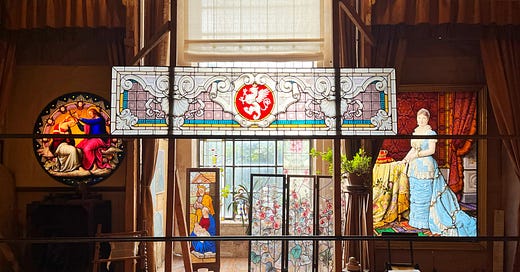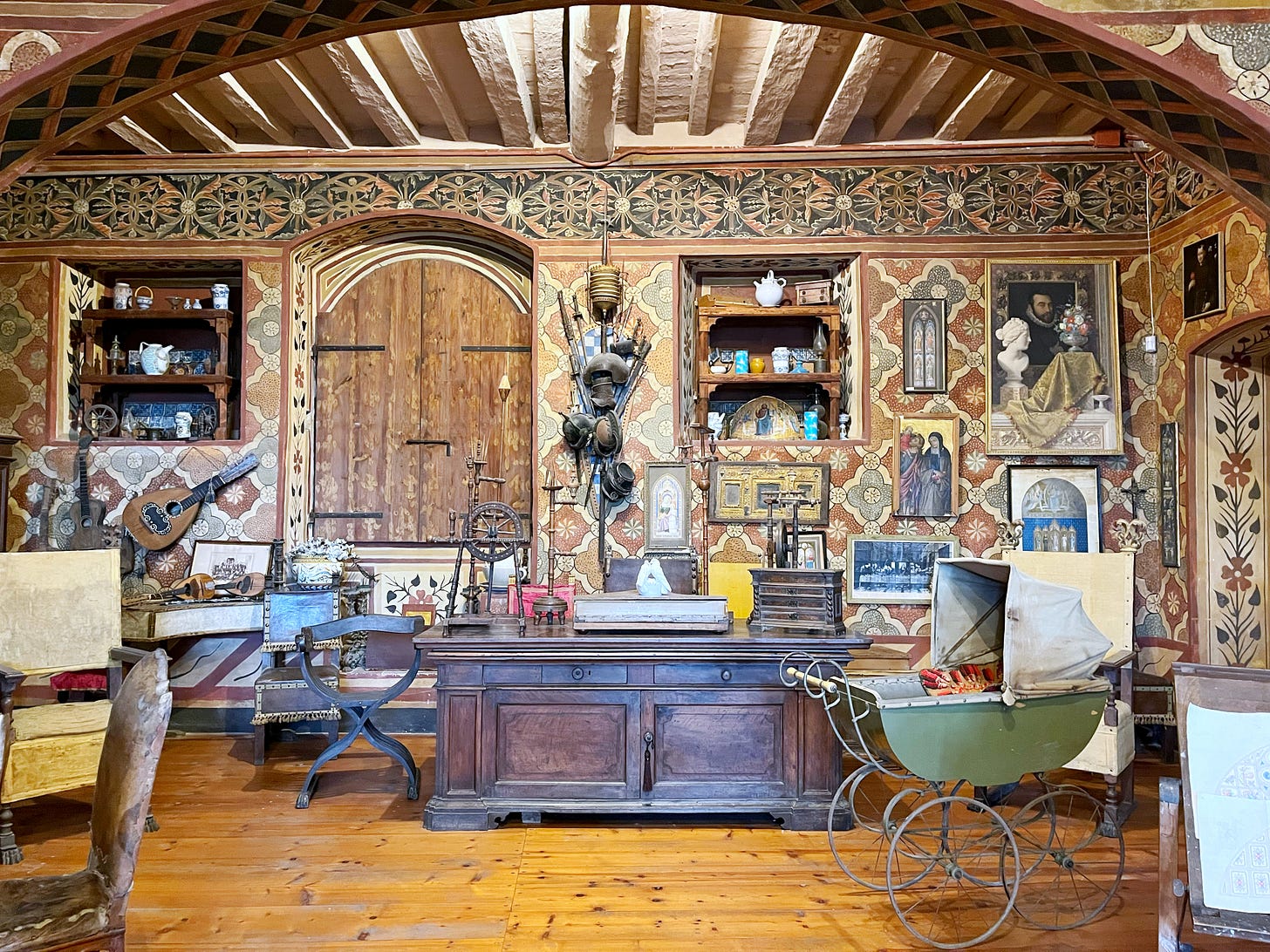Inside Studio Moretti Caselli, One of the Last Remaining Stained Glass Workshops in Italy
Issue #107
Once a fixture in many churches, galleries, and private homes throughout Europe, stained glass is a dying art with a tradition that stretches back hundreds of years. Some of the earliest writings that mention stained glass windows in early Christian basilicas date back to the 3rd century. If you’ve ever stood staring at a stained glass window as the sunlight streams in, you’ve seen with your own eyes the magic created by this art form that’s gradually being relegated to the past. But have you ever stopped to think about what goes into the making of stained glass?
On a recent trip to Umbria, I made an appointment to visit the Studio Moretti Caselli in Perugia, one of Italy’s last remaining stained glass workshops, which has been continuously run by five generations of the same family since it was founded. I mentioned the studio in my just-published guide to Perugia for Travel + Leisure (link below in the Further Reading section), but I think it deserves a more in depth feature.
Founded in 1858 by master glass painter Francesco Moretti, the studio moved to its current location in 1895 and today it still feels like a time capsule of that era. As soon as you enter, you see the family’s archives. Maddalena Forenza, who runs the studio, or her mother Anna will lead you on a guided tour, starting in a small room where you can see the old furnace and tools they used, as well as shelves upon shelves of small bottles containing the powder that was used to dye the glass.
Then they’ll lead you into a much larger room that’s full of antiques, including medieval knight’s armor, musical instruments, a spinning wheel, paintings, a baby carriage, and much more. Hanging on the walls are studies for stained glass windows created there and in front of the windows are a few examples of stained glass windows, including a piece depicting Christ.

As Maddalena explained, one of the studio’s biggest commissions was a massive stained glass version of Da Vinci’s Last Supper, which Rosa Moretti Caselli and Cecilia Caselli created for the Glendale Cemetery in Los Angeles in 1930. They had to be extremely precise because, unlike painting on canvas, when you paint on glass, you can’t just paint over your mistakes. If they messed up, they would have to start that panel over again from scratch. When they finally finished, they had to worry about the transport and installation. Imagine the stress!
One of the studio’s greatest masterpieces is on display in the next room: a life-size portrait of Queen Margherita of Savoy, which Francesco Moretti exhibited in Milan, Rome, and London in the 1880s. Maddalena explained how he cleverly hid the metal seams used to hold the pieces of glass together by working it into the folds of her dress and the tablecloth.
During his lifetime, Francesco created and restored stained glass windows for churches like the Church of San Domenico in Perugia and exhibited his pieces at the Paris Universal Exhibition and the Esposizione Umbra. He taught painting and became Director of the Perugia Academy of Fine Arts before assuming the position of Director of the Pietro Vannucci Municipal Gallery, a position he held for 40 years.
Truth be told, today the Studio Moretti Caselli is more of a museum than a working studio, as Maddalena explained during my visit. Maddalena and her mother are still passionate about stained glass, but the profit margins are just too small to make it economically sustainable.

Every now and then, Maddalena and Anna will accept commissions, but only from people who truly appreciate this art and won’t rush them to produce a piece on a specific timeline. They also teach workshops to people who want to learn the art of stained glass making. At the end of the tour, we caught up with Anna, who was painting a window depicting the Madonna and child.
If you’re ever in Perugia, it’s worth visiting. The studio is open by appointment from 9 a.m. to 1 p.m. Monday through Saturday.
Further Reading
If you’re thinking about visiting Perugia, be sure to check out my aforementioned guide for Travel + Leisure here.
For more info, including how to book a tour, visit the studio’s website.
I visited the Studio Moretti Caselli thanks to a tip from Marta Cucchia, who runs the Atelier Giuditta Brozzetti, which still produces traditional Umbrian textiles using antique looms. You can read my interview with Marta here.
Curious to learn more about Italy’s green heart? Here’s why you should plan a trip to Umbria.
You can find all the New Roman Times’ coverage of under-the-radar destinations here.








We scheduled a visit at the Studio Moretti Caselli in October 2024 and it was astounding. The tour provided us with an incredible background into the history of Perugia as well as the history of stained glass and photography techniques. And seeing the work up close, particularly the portrait of Queen Margherita of Savoy, was absolutely stunning. We loved every minute of it!
Amazing work-- the hiding of the metal seams in the Queen Margherita piece is incredible. But I can't help dwelling on the idea that a stained-glass rendering of the "Last Supper"-- as you said, a remarkable technical achievement-- is somewhere on the wall of a cemetery in Glendale, California. Bury me in Glendale?